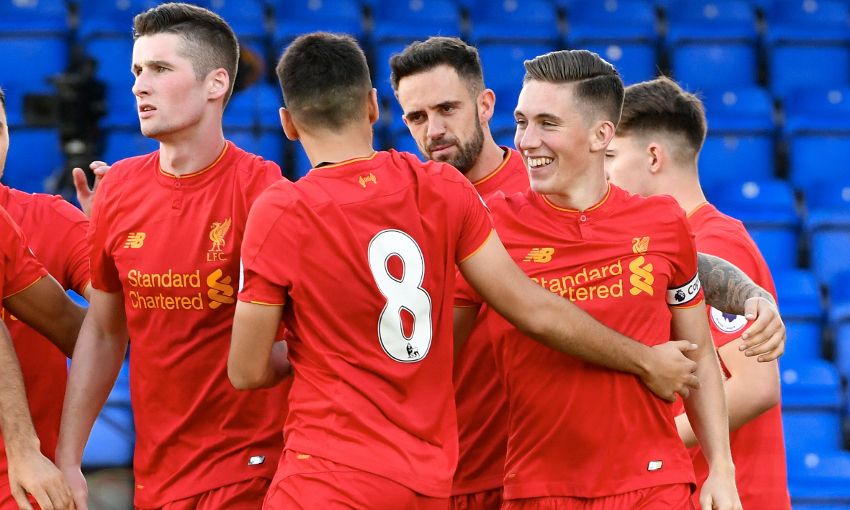As a fan, pre-season is fairly underwhelming. It is eagerly lapped up, given that it is the first chance to see Liverpool in action for the best part of two months, but the matches are rarely scintillating. They are played at a slower pace, everyone looks that little bit less sharp, and even the good games are marred by the nagging knowledge that absolutely nothing rides on the result. Nonetheless, this does not deter us from getting up at ungodly hours to watch the beloved team edge past an obscure Australian outfit, or else face off against a domestic rival in a baseball ground in Massachusetts. Why do we do this? Undoubtedly it is partly because the bulk of the Liverpool fan-base are masochists, but there’s something else too! Pre-season can sometimes reveal quite a lot about a team, and can indeed be very useful for a variety of reasons.
- Building up match fitness

Source: liverpoolfc.com
This is probably the most obvious benefit of pre-season. It does not make for exciting viewing, and in fact contributes to the relative lack of quality on show, but it is of crucial importance to the side. Admittedly, the modern player is training hard even over their holiday – one need only look at the respective social media accounts of Dejan Lovren and Adam Lallana for evidence of this. However, the videos Firmino uploads tell a different story: at least some of the players will definitely need to put in some work to get back in condition! In any case, proper match fitness cannot be maintained purely through training; the players need game time to get back up to speed, and whilst this is not exciting it is important. This is particularly true for Danny Ings, who fans will be delighted to see back in a Liverpool shirt after a torrid two years of injury.
- Embedding new signings
By contrast to the match fitness point, this advantage of pre-season is very exciting for the fans. A first glimpse at a new signing is always eagerly anticipated, even if it is against Tranmere. This comes with a word of warning, of course – the combination of everyone being off the pace and the opposition generally being vastly inferior can flatter to deceive. I was certainly sucked into the Aspas hype following a storming pre-season; as it happens I still think he is an excellent forward, but there is no hiding from the fact that he didn’t cut it at Liverpool. Nonetheless, watching new signings in pre-season can give the fans an idea of their style of play and what they might add to the squad. More importantly, it gives the new signings a chance to settle in; it allows them to function alongside their new team-mates, potentially in a new system, without the immediate pressure of a competitive match. This gives the squad a better chance of hitting the ground running when the actual season gets up and running. This is all contingent, of course, upon transfer business being conducted earlier rather than later in the window.
- Giving young players a chance

Source: liverpoolfc.com
This is another crucial aspect of pre-season, but can sometimes conflict with the embedding of new signings. Acclimatising new players will have limited effect if they are surrounded by youngsters who they are unlikely to be playing alongside come the season proper. As such, I prefer two broadly separate teams – a first team to play for forty-five minutes, and a team of youth prospects for the second forty-five. This comes with the proviso that the ‘first team’ should include one or two of the most promising youth prospects, so as to get them ready for a potential step up in the near-future: this year, I would like to see Alexander-Arnold and Gomez featuring alongside the seniors. This strikes the right kind of balance: the new additions to the squad get game time alongside those who will actually be playing with them in competitive matches, a couple of the most promising youngsters get a similar taste of ‘first team’ action, and the rest of the youngsters get given regular forty-five minute spells to showcase themselves to the manager and fans. For the fans in particular, it is nice to get a chance to see these youngsters play – many don’t watch the youth teams regularly, and pre-season is a chance for them to form opinions on the youth prospects.
- Trialling tactics
The lack of anything being at stake may contribute to the absence of much excitement in pre-season, but it has its benefits. It allows Klopp to experiment with various tactical approaches, without anything other than pride riding on it. Of course, the German showed at the back end of last season that he doesn’t mind switching formation at an important time – that gamble paid off nicely – but it is preferable to be able to experiment in a more low-pressure environment. This year, that means trying out both the 4-3-3 and the 4-4-2 diamond. The latter was the one Klopp adopted for the 2016/17 run-in, but the former has traditionally been his favourite: the signing of Salah indicates that he will stick to the 4-3-3, but I for one would like to see him at least experimenting with Mane and Salah as strikers in a diamond. Firmino could play in behind, with Coutinho and Wijnaldum playing ahead of Can – it seems unlikely that this will be the go-to formation, but it is worth trying out.
Pre-season is undoubtedly a mere shadow of competitive football, but it does the job nicely as a substitute. It gives fans the chance to have a closer look at new signings and youngsters alike, allows for tactical experimentation and ensures that everyone, players and fans alike, is raring to go for the start of the season. Bring it on!
James Martin
Latest posts by James Martin (see all)
- A Pressing Concern - February 8, 2021
- Manchester City 1-1 Liverpool: Did Klopp’s formation gamble pay off? - November 10, 2020
- The big Premier League preview Part Two – The bottom half - September 10, 2020
